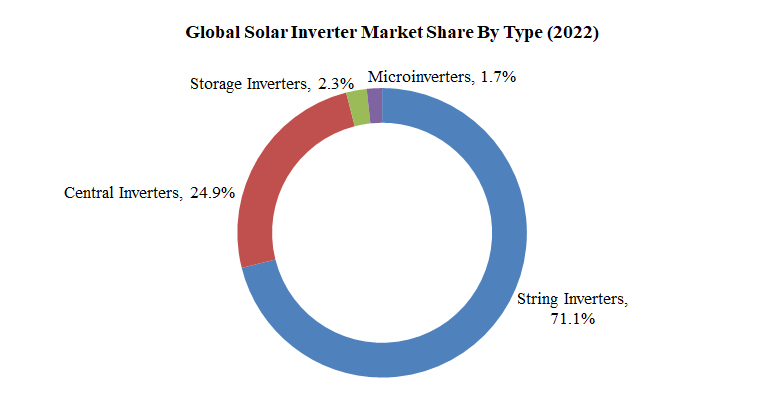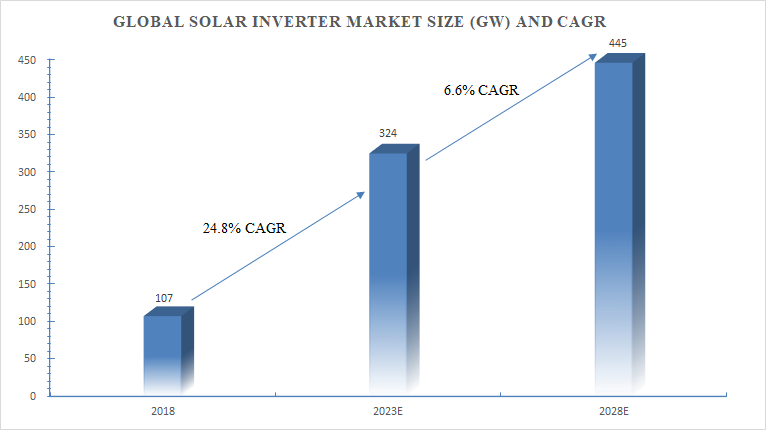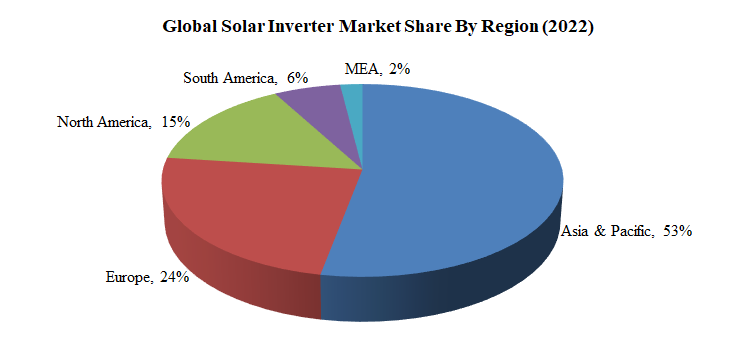Solar Inverter Producers and Solar Inverter Market Trend
In recent years, the solar inverter market has witnessed remarkable growth and diversification, with a wide range of applications driving its expansion. Solar inverters, devices that convert direct current (DC) generated by solar panels into alternating current (AC) for use in homes, businesses, and the grid, have become pivotal components in the renewable energy ecosystem.
The solar inverter market can be classified into four primary categories:
String Inverters (71.1%): These inverters are known for their reliability and efficiency in smaller solar installations, where solar panels are connected in series or "strings."
Central Inverters (24.9%): Designed for utility-scale solar farms, central inverters handle large capacities and offer high efficiency.
Storage Inverters (2.3%): With the growing importance of energy storage solutions, storage inverters play a vital role in managing and storing surplus energy for later use.
Microinverters (1.7%): Microinverters are suitable for residential installations, providing individual panel-level optimization and monitoring capabilities.
 The solar inverter market has been on an upward trajectory, demonstrating impressive growth rates. In 2018, the global solar inverter market stood at 107 GW. Fast forward to 2023, and it is expected to surge to 324 GW, with a compound annual growth rate (CAGR) of 24.8% from 2018 to 2023. Looking ahead to 2028, the market is projected to reach 445 GW, with a CAGR of 6.6% from 2023 to 2028.
The solar inverter market has been on an upward trajectory, demonstrating impressive growth rates. In 2018, the global solar inverter market stood at 107 GW. Fast forward to 2023, and it is expected to surge to 324 GW, with a compound annual growth rate (CAGR) of 24.8% from 2018 to 2023. Looking ahead to 2028, the market is projected to reach 445 GW, with a CAGR of 6.6% from 2023 to 2028.
 The Asia-Pacific region, Europe, and the United States have emerged as the powerhouses of solar inverter development, boasting the highest growth rates and the largest share of the global market. In 2022, these regions accounted for a significant portion of global solar inverter shipments, with the Asia-Pacific region leading at 53%, followed by Europe at 24%, and the North Americas at 15%.
The Asia-Pacific region, Europe, and the United States have emerged as the powerhouses of solar inverter development, boasting the highest growth rates and the largest share of the global market. In 2022, these regions accounted for a significant portion of global solar inverter shipments, with the Asia-Pacific region leading at 53%, followed by Europe at 24%, and the North Americas at 15%.
 Solar inverters are indispensable in the solar energy landscape. They convert the DC electricity generated by solar panels into AC, making it compatible with the electricity grid and suitable for powering homes and businesses. Solar inverters also play a crucial role in ensuring the efficiency and reliability of solar installations, as well as facilitating grid stability and energy management.
Solar inverters are indispensable in the solar energy landscape. They convert the DC electricity generated by solar panels into AC, making it compatible with the electricity grid and suitable for powering homes and businesses. Solar inverters also play a crucial role in ensuring the efficiency and reliability of solar installations, as well as facilitating grid stability and energy management.
Beyond their primary function, solar inverters are integral to energy storage systems. They enable the efficient charging and discharging of batteries, paving the way for reliable off-grid and hybrid renewable energy solutions. Moreover, the rise of microinverters has revolutionized residential solar installations, offering superior performance and monitoring capabilities at the individual panel level.
In conclusion, the solar inverter market is thriving, driven by rapid technological advancements and the global shift towards renewable energy sources. With an array of applications ranging from residential rooftops to utility-scale solar farms, solar inverters are at the forefront of the clean energy revolution, promising a sustainable and eco-friendly future.